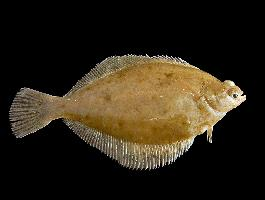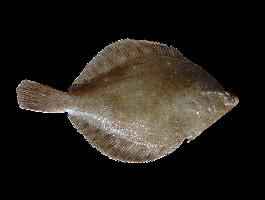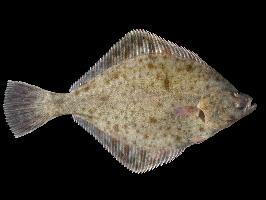
Poids et mesures
| Longueur | de 30 à 40 cm |
|---|
Description de l'animal
The Common Dab (Limanda limanda) is a species of flatfish native to the shallow waters of the northeastern Atlantic Ocean, including the North Sea, Baltic Sea, and off the coasts of northern Europe. This species is a member of the family Pleuronectidae, which encompasses a variety of flatfish known for their unique morphology and lifestyle adaptations.Adult Common Dabs are easily recognized by their oval-shaped, laterally compressed bodies, which can grow up to 40 centimeters in length, although most individuals are smaller, averaging around 20 to 30 centimeters. Their body coloration is an intriguing aspect of their biology, serving as camouflage against predators. The top side of their body, which faces upwards when they are lying on the sea floor, is a sandy brown color with scattered darker spots and patches. This coloration allows them to blend seamlessly with the sandy or muddy bottoms where they reside. The underside of the Common Dab is a much paler, almost white color, a common trait among flatfish, which helps them avoid detection from predators below.
One of the most distinctive features of the Common Dab, as with other flatfish, is the asymmetrical placement of its eyes. Both eyes are located on the right side of its body, which is the side that faces upwards when the fish is resting on the seabed. This adaptation allows the Common Dab to keep a vigilant lookout for predators and prey while remaining mostly buried under the substrate for camouflage.
The diet of the Common Dab primarily consists of small invertebrates, including worms, crustaceans, and mollusks, which they locate using their highly sensitive lateral line system. This system detects minute vibrations in the water, guiding them to their prey.
Reproduction in Common Dabs occurs once a year, with the timing depending on their geographic location. During the breeding season, females release thousands of eggs into the water, which are then fertilized externally by the males. The eggs float in the plankton until they hatch, and the larvae are initially symmetrical, with an eye on each side of their head. As they mature, one eye migrates to the other side of the body, and the young fish begin their life on the ocean floor.
Common Dabs play a significant role in their ecosystem as both predators and prey. They are a food source for larger fish, seabirds, and marine mammals. While not as commercially sought after as some other flatfish species, the Common Dab is still fished on a small scale for human consumption, valued for its mild flavor and delicate texture.
In summary, the Common Dab (Limanda limanda) is a fascinating species adapted to life on the seabed of the northeastern Atlantic. Its unique physical characteristics, behavior, and role in the marine ecosystem make it an interesting subject of study for marine biologists and a delightful discovery for those exploring the shallow waters where it resides.
Animaux similaires
Nouvelles photos d'animaux
Top 10 des animaux
- Dolphin gull (Leucophaeus scoresbii)
- Diana monkey (Cercopithecus diana)
- Moustached guenon (Cercopithecus cephus)
- Galápagos tortoise (Geochelone nigra complex)
- Russian tortoise (Testudo horsfieldii)
- Japanese macaque (Macaca fuscata)
- Stone loach (Barbatula barbatula)
- Greek tortoise (Testudo graeca)
- Common flying dragon (Draco volans)
- Colossal squid (Mesonychoteuthis hamiltoni)

